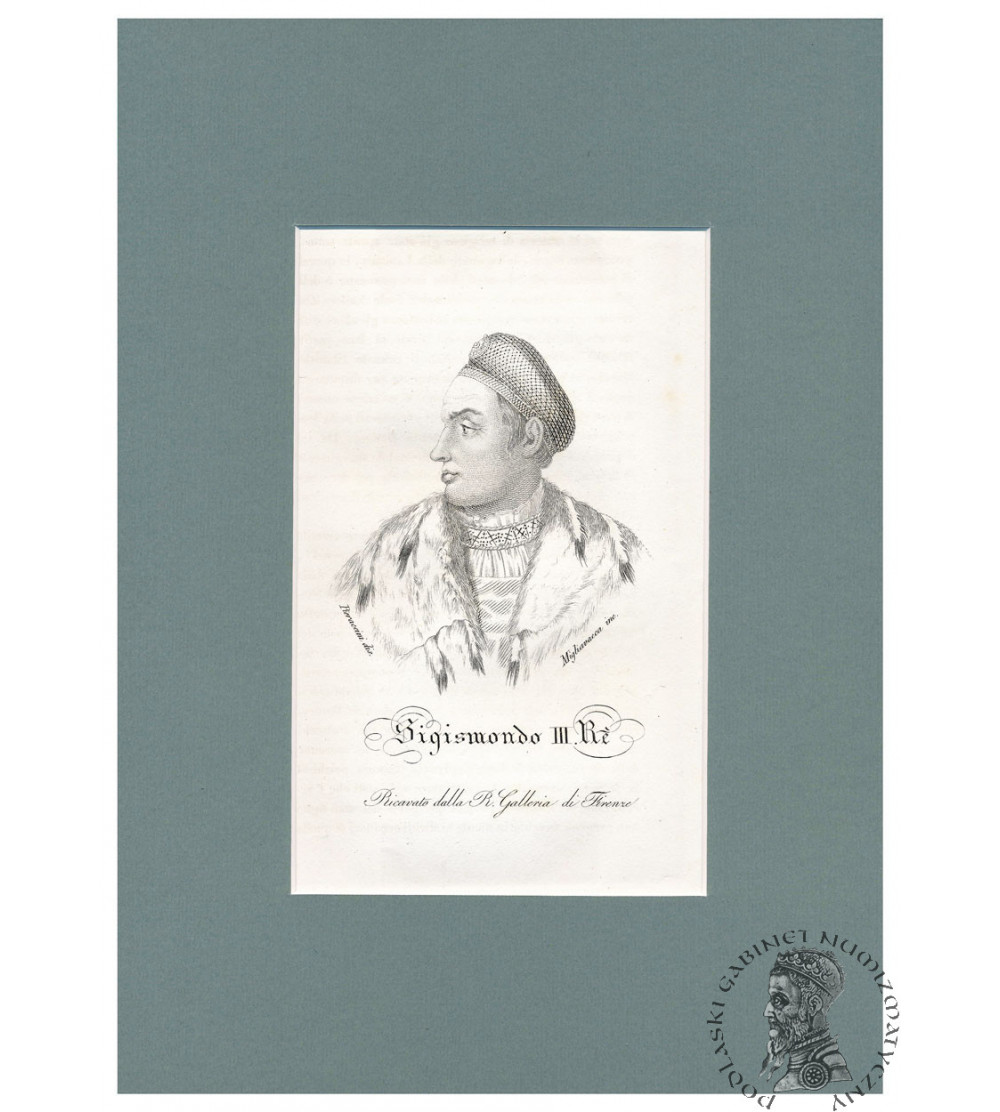




Sigismund III Vasa, King of Poland, portrait, steel engraving 19th century, work from Bernard Zaydler's volume - Storia della Polonia, Florence 1831, all A4 format (passe-partout), image dimensions 11 cm x 18 cm, very good condition.
Sigismund III Vasa (1566-1632). Elective king of Poland from the Vasa dynasty. He was the son of King John III Vasa of Sweden and the Polish princess Catherine Jagiellon, who married him. He was elected Polish monarch in 1587, after the death of Stefan Batory. His candidacy was supported by his background - he was the grandson of Sigismund the Old and Bona Sforza and the nephew of the last Jagiellon, Sigismund Augustus. His candidacy was supported by the queen-widow, Anna Jagiellonka. Despite the war waged with the Habsburgs as a result of the double election, he advocated close cooperation with his southern neighbor. He married two Austrian princesses in succession - Anna and her sister Constance. He also seized the throne of Sweden in 1592, but lost it as early as 1599. Through him, Poland was embroiled in a struggle with the Scandinavian kingdom that dragged on for three decades and ended with an unfavorable peace treaty. As a result of his own stubbornness and lust for power, he torpedoed the plan to install his son Vladislav on the Moscow throne. During his reign there were several great military successes: victories at Klushino (1610), Chocim (1621) and Smolensk (1611), as well as the brief capture of Moscow (1610-1612). In 1596 he moved the state capital from Krakow to Warsaw. Sigismund III Vasa was known for his love of alchemy, which even led to a devastating fire at Wawel Castle. He was an ailing ruler, and in his final years became infirm. He was troubled by gout and bile duct problems. He died shortly after the death of his second wife Constance, probably from a stroke. Source: ciekawostkihistoryczne.pl
"STORIA DELLA POLONIA" BY BERNARD ZAYDLER - THE HISTORY OF POLAND IN PICTURES TOLD TO ITALY. Title of the work Storia della Polonia fino agli ultimi tempi scritta dal dottore Bernardo Zaydler Polacco membro della Regia Società degli Amici delle Scienze in Warsavia, e di pare-cchie accademie letterarie italiane can be translated as "History of Poland until the last times written by Dr. Bernard Zaydler, a Pole, member of the Royal Society of Friends of Sciences in Warsaw and similar literary academies in Italy." It was published in the Florentine outhouse V. Batelli e Figli, in 1831, that is, during the November Uprising, when the Polish-Russian war was taking place on Polish soil. The "ultimi tempi" mentioned in the title, however, did not include the uprising, and the last chapter of the book was devoted to the flourishing Kingdom of Poland under Czar Nicholas I, whose portrait precedes the title page of the publication. The book consists of two volumes, the first of which has 440 pages and the second 720. The work is illustrated with 107 charts, created in intaglio by Florentine printmakers based on contemporary and ancient engravings. There are also two maps depicting the borders of Poland: pre-partition and from 1831.As Jadwiga Jaworska matter-of-factly describes the book's illustrations, they are "flimsy engravings made by mediocre engravers" . Most of their authors are known mainly from this very publication and only their names, often without first names, fixed in signatures under the compositions, have survived to our times. These included: Corsi , Verico , Adamo Bozza , Nasi, Cignozzi. Among the illustrators, the name of Francesco Pieraccini appears , about whom also little is known. Source: Kamilla Pijanowska, National Museum in Warsaw